This blog is used strictly for educational purposes only. #MDA20009
Don't wanna be here? Send us removal request.
Text
Absolute Fortification: China’s Internet Censorship

Remember when the Malaysian government banned Sarawak Report for whistleblowing bribery and financial mismanagement linked to Malaysian Prime Minister Najib Razak? Remember when Beauty and The Beast were almost banned in Malaysia due to the film’s “gay moment”? Has Malaysian censorship gone too far? Take a look at China, Malaysian censorship is relatively lax compared to China’s Great Firewall.
If you study history, you’ll know that China was under the governance of the communist party after years of imperial rule. While most of the world has adopted some sort of democracy as time passes on; China’s core political system remained unreformed although they had adopted commercial openness. What actually gets censored by the Chinese government? Since 2000, China has started a surveillance system guided by a database which is linked to China’s security organisations to access every citizen’s information (WashingtonPost 2018). The Chinese government employs up to 50,000 people to work on cybersecurity, barring content and disapproving websites that contradict to the values of the Chinese government (WashingtonPost 2018). What are the values of the Chinese government? If websites that contain information such as Google Scholar and Facebook are banned, one could argue that China is preventing its citizens to gain knowledge on certain issues. China and North Korea (NK) have deep and friendly ties, they share similar political ideologies. Based on VICE’s documentaries on NK, the NK regime maintains a tight grip on information access to maintain the legitimacy of their propaganda and to uphold the mirage of NK as a utopian state. It is a method for NK’s regime to stay in power. Since China shares political ideologies with NK, there is a possibility that internet censorship links to China’s attempt to hold on to their political influence.

Strength in Numbers
As the Chinese became more and more familiar with the internet, the internet became a medium to sow dissent. It is a concern to the Chinese leadership as it can be used to mobilise protest that could topple the government (Economy 2018). China has a population of 1.3 billion, half of its population is online (WashingtonPost 2018). Besides, history shows that the collapse of imperial governments in ancient China was almost always triggered by peasant uprisings. Therefore, the communist party of China has reason to fear that they might lose control.

Oh bother
Even memes get the axe from China’s Great Firewall. Netizens started comparing President Xi Jinping to Winnie The Pooh due to their similarities in appearance. Thus, the cartoon bear was banned in China as authorities fear bloggers might use the cartoon character as an online euphemism to criticise the government (McDonell 2017). Netizens keen on pollical reform use euphemisms and references to criticise governments and start political discussions. Some even use Virtual Private Networks (VPN) to unblock censored websites (Economy 2018). These tools come in handy with China’s tight surveillance.
Reformation
In order for China tear down their Great Firewall, political reforms need to happen. Based on the current situation in China under President Xi’s rule, I personally do not think political reforms will occur any time soon as he holds too much power and authority. Hopefully, as times goes by, China’s political views will evolve and Chinese netizens can finally enjoy the ‘real version’ of the internet.

Reference
Economy, E. (2018). The great firewall of China: Xi Jinping’s internet shutdown. [online] the Guardian. Available at: https://www.theguardian.com/news/2018/jun/29/the-great-firewall-of-china-xi-jinpings-internet-shutdown [Accessed 15 Jun. 2019].
McDonell, S. (2017). Why China censors banned Winnie the Pooh. [online] BBC News. Available at: https://www.bbc.com/news/blogs-china-blog-40627855 [Accessed 15 Jun. 2019].
WashingtonPost. (2018). The Great Firewall of China, The Washington Post. [online] WashingtonPost. Available at: https://www.washingtonpost.com/business/the-great-firewall-of-china/2018/11/05/5dc0f85a-e16d-11e8-ba30-a7ded04d8fac_story.html?noredirect=on&utm_term=.4f482415d154 [Accessed 15 Jun. 2019].
2 notes
·
View notes
Text
Broke Gamers: Microtransactions, Loot Boxes and DLCs

In 2006, game publisher Bethesda released a $2.50 downloadable content (DLC) for their game Elder Scrolls Oblivion. In that DLC, the player was provided with the opportunity to decorate their horses with ‘horse armour’. DLCs are a relatively new concept at that point and gamers did not think $2.50 is a fair price for a cosmetic item that can only be shown to the players himself (Kotaku 2016). It would make more sense for Bethesda to sell their ‘horse armour’ if Oblivion was an online multiplayer game but it isn’t. This became the infamous Horse Amour incident and it was the early signs of the gaming industry’s shift to monetisation.

Mulahhhh
Today, monetisation is the undisputed trend of the gaming industry as game devs need the cash to sustain the game and the studio. In order to solidify the player base, developers have to provide a steady stream of content and support (Brown 2017). Without cash flow, it is difficult for studios to maintain and produce content for the game. Moreover, a 2016 report reveals that 25% of PC games revenue is generated by additional content (Brown 2017). Hence, it is almost impossible to detach monetisation from gaming nowadays.
Do DLCs negatively affect the gaming community? It really depends on the quality of the DLC. Good quality DLCs provide superb content at a reasonable price. For instance, the game Witcher 3 offered two news tales for its 24$ season pass it also offers up to 30 hours of gameplay (PlayStationStore 2019). That’s a good example of how a DLC should be, it is fairly priced and it doesn’t affect the overall experience of the base game. Negative examples of DLCs exist as well. These DLCs make players feel degraded as they provide a clear advantage to lesser paying players. One of the examples of this predatory practice is Star Wars Battlefront II’s loot box system. In Battlefront II, the only way to acquire new character skills is through loot boxes (Polygon 2017). These loot boxes generate items randomly and they are set at a high in-game price. Therefore, players will have to spend real money on in-game credits since it is the only way to gain fair advantage and progression in the game.
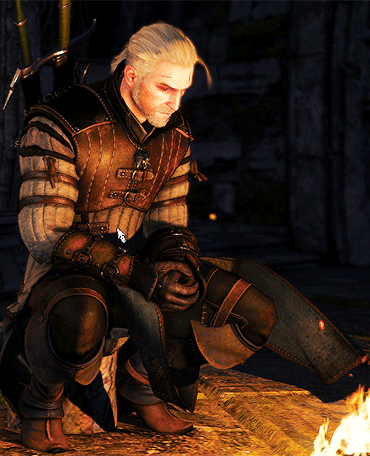
Should we be worried?
Currently, the situation is still under control. Yet, gamers have to be on guard. Predatory loot boxes and DLCs are facing retaliation from gamers and the authorities (D’Anastasio 2018). EA-the publisher of Battlefront II suffered a $3 billion shed in stock value after receiving overwhelming criticisms online (pcgamer 2017). Battlefront II’s loot box scheme also triggered Hawaii lawmakers to introduce bills that regulate loot boxes (Polygon 2018). Cases like this make game publishers understand that they have to connect to their player base. Publishers have recognised that player connection is important as attachment increase the chances of business. Thus, they are finding new ways to generate cash flow.
Voice Out!
Gamers play a pivotal role in the shaping of game monetisation culture. If they disapprove of a publisher’s monetisation tactics, they shouldn’t comply. The best way to resist monetisation culture is to voice out and boycott their products. As evident in the case of Battlefront II, changes will occur if people are bold enough to voice out (Gamespot 2017).

Reference:
Brown, F. (2017). Microtransactions and DLC have tripled the value of the game industry. [online] pcgamer. Available at: https://www.pcgamer.com/mircrotransaction-and-dlc-have-tripled-the-value-of-the-game-industry/ [Accessed 15 Jun. 2019].
D’Anastasio (2018). Battle Passes Are So Hot Right Now. [online] Kotaku.com. Available at: https://kotaku.com/battle-passes-are-so-hot-right-now-1827026722 [Accessed 15 Jun. 2019].
Gamespot (2017). Shortly Before Star Wars: Battlefront 2's Release, EA Removes Microtransactions For Now. Retrieved from https://www.gamespot.com/articles/shortly-before-star-wars-battlefront-2s-release-ea/1100-6455042/
Kotaku (2016). [online] Kotaku.com. Available at: https://kotaku.com/never-forget-your-horse-armor-1768813271 [Accessed 15 Jun. 2019].
pcgamer (2017). Electronic Arts stock sheds $3 billion in value after Battlefront 2. Retrieved from https://www.pcgamer.com/electronic-arts-stock-sheds-3-billion-in-value-after-battlefront-2/
PlayStationStore (2019). The Witcher 3: Wild Hunt Expansion Pass. [online] PlayStation™Store. Available at: https://store.playstation.com/en-us/product/UP4497-CUSA00527_00-SPUS000000000001 [Accessed 15 Jun. 2019].
Polygon (2017). Star Wars Battlefront 2 heroes come at a substantial cost. Retrieved from https://www.polygon.com/2017/11/11/16637840/star-wars-battlefront-2-loot-crates-cost-heroes
Polygon (2018). Hawaii lawmakers introduce loot crate regulation bills. [online] Polygon. Available at: https://www.polygon.com/2018/2/13/17007830/hawaii-loot-crate-laws-ea-star-wars-battlefront-2 [Accessed 15 Jun. 2019].
0 notes
Text
Fanatics: Y’all seriously need to chill

Fandom… oof. That single word reminds me of hordes of people radically professing their love for someone or something. It’s crazy how far people would go just to show love; for example, dressing and talking like their favourite cartoon characters (stay triggered anime weebs). To be honest, I have nothing against people who are ‘fans’; we’re allowed to like things! What I’m against are fanatics, people who often go too far beyond the line, people who lack moderation or rationality.

Unhealthy Obsession
I don’t get the mentality of obsessive fanatics, why are they investing so much time and energy on people who won’t love them back? It is worth the money to decorate your room with posters of your imaginary lover? Perhaps they crave a relationship that has no repercussions (Tiffany 2017)? Do they want to have a sense of community by being involved in participatory culture? Research by Mackellar (2009) shows that fans appreciate artists who enable them to surrender their emotional and physical side. Thus, emotional attachment could be one of the reasons fans become fanatics. With that being said, I can understand why media portray fans as weird and overly emotional. There is a disconnection between common people and people participating in fandom culture. They’re like me, having a lot of scepticism in my mind over fandom. One bad apple spoils the bunch, that’s the usual and unfortunate behaviour of our society. Therefore, fandom with always gets a bad rep from the media due to the fanatics from its community.
My experience with fandom
I like lots of things in life. But one thing that I am consistently passionate about is the Los Angeles Lakers basketball team. I am a part of sports fandom. I started being a Laker fan since 2008 when I stumbled upon a match while browsing channels on my TV. How far was I involved in this fandom culture? I would say I have a thorough understanding of the culture and history of the team and the league. I’m subscribed to NBA podcasts; I’m aware of the trends of the league; I play NBA video games; I watch live broadcasts and highlights of the team and I also purchase official Laker merchandise. I wholly enjoy consuming media related to the Lakers or the NBA. However, regardless of my passion, I’m not attached to it. If the NBA decides to shut down one day, I will definitely feel sad but I won’t react as if the world is ending. Personally, my interest in the Lakers in only a small portion of life; there’s so much more to experience in life. I can always move on and being a part of new things. Hence, I believe rationality is extremely important as it prevents us from turning into obsessive weirdos that the media portray.

Reference:
Tiffany, K. (2017). I love you, Jake Gyllenhaal. [online] The Verge. Available at: https://www.theverge.com/2017/11/3/16576850/jake-gyllenhaal-newsletter-fandom-fans-essay [Accessed 16 Jun. 2019].
Mackellar, J. (2009). Dabblers, fans and fanatics: Exploring behavioural segmentation at a special-interest event. Journal of Vacation Marketing, 15(1), 5–24. https://doi.org/10.1177/1356766708098168
2 notes
·
View notes
Text
The Legitimacy of Crowdsourced News
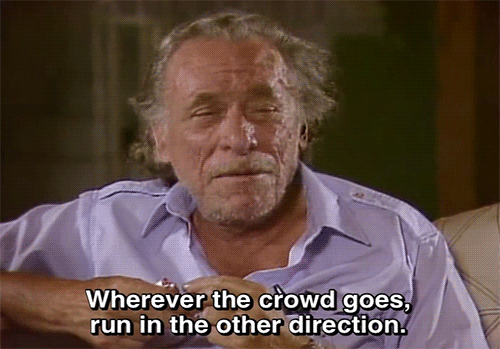
What’s Crowdsourcing?
Crowdsourcing can be defined as an engaging online activity that can involve individuals, institution, non-profit organisation or a group of people with varying knowledge (Bennett, Chin & Jones 2014). This ‘crowd’ often have a common goal of solving a particular issue. In this present day of internet culture, the differences between producers and consumers are no longer distinct, everyone has similar tools to create and consume (BusinessNewsDaily 2013). Hence, the productivity rate has increased and productivity is proven possible through a large group of people. One of the biggest crowdsourcing platforms is GitHub. GitHub manages and stores numerous versions of a project; it also has the function of view user’s profile and project history. How does it function? Users copy archived codes into their account, make adjustments then submit it to the initial owner of the code. The owner will then make a decision on whether to merge the modified codes with the original code. Even the GitHub uses their own service; Tom Preston-Werner co-founder and CEO of GitHub requested users to help him build a new data format, in two days, hundreds of contributions were made to the project (Juergen 2013).
Wild Fire
Crowdsourcing isn’t exclusively tied to projects and businesses; people also crowdsource information. Crowdsourced info can be useful and harmful at the same time. It is useful during the case of a disaster as it increases the visibility of the situation to the public. However, as crowdsourced info is not filtered nor governed by a specific body, fake news or misinformation will occur.

One of the notable misinformed crowdsourced news is the Reddit Boston Bombing witch-hunt. After the 2013 Boston Marathon bombing, the Reddit community took it to themselves to identify the suspect. They stumbled upon a Facebook page “Help Us Find Sunil Tripathi”, a page created by family members dedicated to finding the missing 22-year old. Sunil’s photos were then extracted from the Facebook page and used a photo comparison with the pictures of the suspect (BusinessInsider 2013). Misinformation then spiralled out of control; the Reddit community launched multiple attacks towards Sunil’s Facebook page causing the page to be shut down. Sunil’s fate was sealed when a Twitter news feed related to the hacker group Anonymous @YouAnonNews tweeted Sunil’s name to its legions of followers (BusinessInsider 2013). At that point, the internet that has accepted that Sunil is the suspect of the bombings. The Tripathi family were victims of the attacks as well. Sunil’s sister received up to 58 calls around 3 to 4 am when the news broke while the family as a whole received anti-Islam messages even though they were not Islam. Sunil’s innocence was finally proven when NBC’s journalist confirmed that Sunil was not the suspect (BusinessInsider 2013). The misinformed people on the internet tried to apologise but the damage is done. The Tripathi’s efforts to find the missing boy all went down the drain when he was misidentified as a terrorist. All the sorrys can never exchange the trauma caused to the Tripathi’s.


Is crowdsourced information reliable? Maybe; it really depends on the situation. I don’t trust a kid to drive my car neither do I trust Reddit to solve serious crimes. I believe professionals are there for a reason; therefore, to prevent misinformation, people need to make rational judgements when exposed to crowdsourced information.

Reference:
Bennett, L., Chin, B. and Jones, B. (2014). Crowdfunding: A New Media & Society special issue. New Media & Society, 17(2), pp.141-148. BusinessNewsDaily (2013). What is Crowdsourcing?. [online]
BusinessInsider (2013). What It's Like When Reddit Wrongly Accuses Your Loved One Of Murder. [online] Business Insider. Available at: https://www.businessinsider.com/reddit-falsely-accuses-sunil-tripathi-of-boston-bombing-2013-7/?IR=T [Accessed 14 Jun. 2019].
BusinessNewsDaily (2013). What is Crowdsourcing?. [online] Business News Daily. Available at: https://www.businessnewsdaily.com/4025-what-is-crowdsourcing.html [Accessed 14 Jun. 2019].
Juergen, M. (2013). GitHub Is Helping Companies Work Together by Crowdsourcing Software. [online] Entrepreneur. Available at: https://www.entrepreneur.com/article/226707 [Accessed 14 Jun. 2019].
0 notes
Text
Do Not Feed Da Trolls

Being a Prick Just Because You Can
Trolling is a huge part of modern digital citizenship. It’s a deliberate behaviour that attempts to torment digital citizens in a provocative and insulting manner (Nicol 2012). According to Coles and West (2016), trolling could manifest as a subtle or unsubtle offensive message directed to offend, start an argument or lure people to pointless debates. Its core purpose is to garner strong and emotional reactions. Emotionally trigger those who are unable to resist this provocative behaviour.
Have you ever wondered why do people troll? The answer: anonymity. Anonymity facilitates the condition for trolling. When people hide behind their computers, they assume that they are invisible and they are under minimal authority. Therefore, it motivates them to do things that they wouldn’t dare do in daily life (Nicol 2012). Essentially, they are ‘keyboard warriors’, through the power of the internet, they do unthinkable things under their virtual disguise.
Just a Prank?
It’s just a prank! Or is it? Trolling can have serious consequences online and in daily life. It results in harsher opinions or judgements being formed, acting as a mechanism for prejudice behaviour (Coles and West 2016). If an individual troll decided to spread false news, he might just receive verbal backlash. However, when a collective group of trolls decided to spread false news, the impact of their behaviour might be dire than you think. People who are unaware of the legitimacy of the news might assume it to be true as it is constantly spread. Besides, trolling has other severe consequences such as the increase of suicidal thoughts and self-harm (Coles and West 2016). Hence, we could conclude that trolling is more than unpleasant; it is, in fact, unethical in some cases.

Trolling ≠ Bad
There is another concept of trolling called ‘kudos trolling’, where users will post irrelevant information in good faith (Coles and West 2016). Hence, the disruption caused by the interactions here is considered as an unfortunate or unintended consequence.
Some brands use trolling as a strategy for marketing. It gives the brand a chance to go viral without spending a lot of cash (Vox 2019). Besides, it humanizes the brand, proving to customers they can be funny (Vox 2019). Spotify celebrated the end of 2017 by sharing reflection videos and statistics to their users. They took the information they had and turned it into an ad campaign, poking fun of their user’s habits (Adweek 2017). The campaign was very successful, garnering huge attention from consumers.


Grey Area
Now that we’ve covered both sides of trolling, is there a way to limit negative trolling? When it comes to online content, digital media companies are the governing authority. They have the power to control who they want on their platform. Recently, Facebook and Instagram banned controversial right-wing figures that include Alex Jones and Milo Yiannopoulos due to their policies on hate speech and promoting violence (Bloomberg 2019). While some applaud Facebook’s decision, critics might say that Facebook is suppressing conservative voices and violating freedom of speech. In my opinion, trolls can never die off, it’s a part of internet culture. Therefore, banning trolls from digital platforms might not be the best solution. However, I do agree that trolls have to be liable to their online behaviours. They have to be identified and face legal consequences if they broke the law.
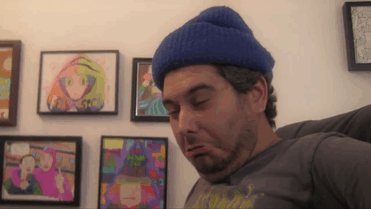
References
Adweek. (2017). Spotify Unearths More Hilarious User Habits in Global Outdoor Ads for the Holidays. [online] Adweek.com. Available at: https://www.adweek.com/creativity/spotify-unearths-more-hilarious-user-habits-in-global-outdoor-ads-for-the-holidays/ [Accessed 6 May 2019].
Bloomberg.com. (2019). Facebook Bans Alex Jones, Milo Yiannopoulos, Other Far-Right Figures. [online] Available at: https://www.bloomberg.com/news/articles/2019-05-02/facebook-bans-alex-jones-yiannopoulos-other-far-right-figures [Accessed 6 May 2019].
Coles, B.A. & West, M. 2016, "Trolling the trolls: Online forum users constructions of the nature and properties of trolling", Computers in Human Behavior, vol. 60, pp. 233-244.
Nicol, S. 2012, "Cyber-bullying and trolling", Youth Studies Australia, vol. 31, no. 4, pp. 3-4.
Vox. (2019). Why do brands attempt April Fools’ Day pranks?. [online] Available at: https://www.vox.com/the-goods/2019/4/1/18290776/april-fools-day-brand-worst-pranks-history-google [Accessed 6 May 2019].
4 notes
·
View notes
Text
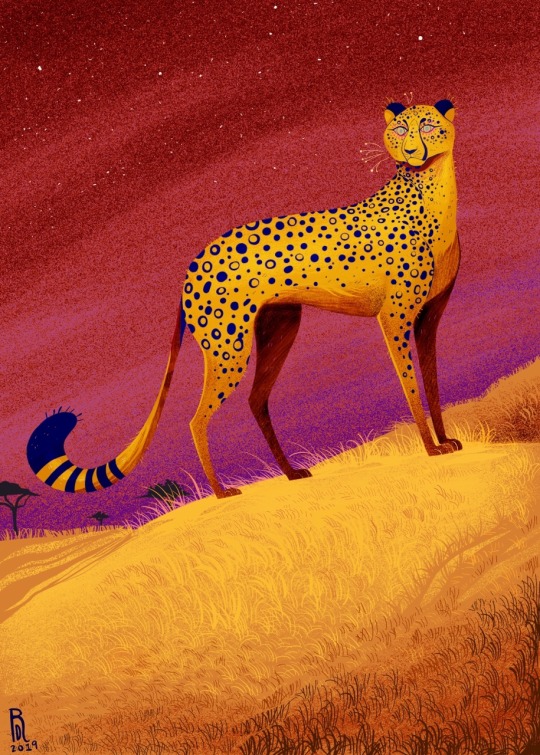
happy Earth day! here is my piece for the @bigcatzine.
6K notes
·
View notes
Text
Protest 101: Social Media

The Early Days...
Life was tough during 14th century England. Workers were forced to work with a minimum wage while some had to work without pay due to the feudalism. Adding insult to injury, taxes were raised in order to fund the war with France. Subsequently, people were starting to realise the importance of freedom; they want equal rights. It escalated to an open rebellion when the people of Essex refused to pay their taxes. Local leaders contacted countryside communities through letters, they rallied and marched to London (Bbc.com 2019). The revolution was ultimately a failure; however, The Peasant’s Revolt was an early example of an organised protest among the common folk.
21st Century
Centuries later, London was occupied by protestors yet again. During the 2011 London Riots, the city was in flames, buildings looted and destroyed. It was the largest post-world-war era disorder in UK’s history (Vice 2016). The protest was triggered by the shooting of Mark Duggan, disadvantaged communities took this opportunity to protest the unequal treatment of the police specifically over the excessive use of stop and search (Vice 2016). Unlike in ancient times, the method of communication had significantly evolved with the aid of technology. Nowadays, protestors and activists seek technology solutions that are straightforward and reachable (Sigal and Biddle 2015). As social media has become a crucial part of life, it was used as the medium to organise the London Riots.

According to Sigal and Biddle (2015), story-elements bring people to protest or start a movement together. The movement started when netizens gathered on a Facebook page to mourn the death of Duggan (Halliday 2011). The initial sadness subsequently transforms into anger, thus triggering the riots. To prevent more chaos, Facebook and Twitter were closely monitored by the authorities, they were ready to react. As the main social media platforms were under governance, protestors pivoted to another platform (Youmans and York 2012). BlackBerry Messenger (BBM) became the designated platform for protestors to deploy or rally people. It was a better alternative as BlackBerry phones were common among teens, it’s a free text messenger and most importantly it is UNTRACEABLE. BlackBerry refused to shut down its services (MailOnline 2011); but agreed to enable police to track and arrest users who spread ‘fake news’ (Halliday 2011). Law enforcement was heavy and they ultimately put an end to the riots.
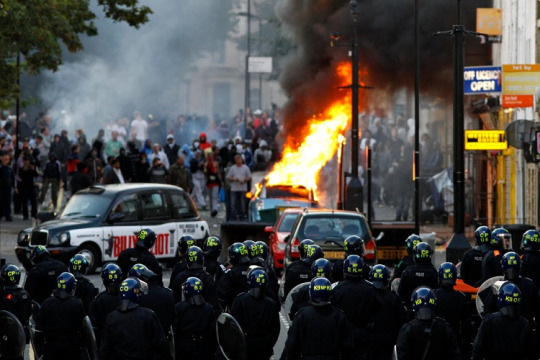
Double-Edged Sword
Without a doubt, social media is important if one is to become an activist. The power of social media as a tool to rally the people can no longer be denied. Nonetheless, it is unsafe. Fundamentally, a social media platform is not designed as a tool to organise movements and protests. Social media’s core purpose is to connect people and gain revenue, it is a business-oriented service (Youmans and York 2012). Hence, they comply with government requests in order to keep their services intact. Moreover, there is no solid proof that social media companies will not ‘sell-out’ to tyrants or despotic regimes to undermine their consumer base. Therefore, activists have to proceed with caution when wielding the influence of social media.

References:
Bbc.com. (2019). [online] Available at: https://www.bbc.com/bitesize/guides/z2c2pv4/revision/1 [Accessed 28 Apr. 2019].
Halliday, J. (2011). London riots: BlackBerry to help police probe Messenger looting 'role'. [online] the Guardian. Available at: https://www.theguardian.com/uk/2011/aug/08/london-riots-blackberry-messenger-looting [Accessed 28 Apr. 2019].
Halliday, J. (2011). London riots: how BlackBerry Messenger played a key role. [online] the Guardian. Available at: https://www.theguardian.com/media/2011/aug/08/london-riots-facebook-twitter-blackberry [Accessed 28 Apr. 2019].
Mail Online. (2011). 'It's unbelievable BlackBerry Messenger hasn't been shut down': Mayor's aide calls for ban on riot 'tool'. [online] Available at: https://www.dailymail.co.uk/news/article-2023924/London-riots-2011-BlackBerry-Messenger-shut-unbelievable.html [Accessed 28 Apr. 2019].
Sigal, I. and Biddle, E. (2015). FCJMESH-007 Our Enduring Confusion About the Power of Digital Tools in Protest. The Fibreculture Journal, (26), pp.290-296.
Vice. (2016). What the 2011 Summer Riots Were Really About. [online] Available at: https://www.vice.com/en_uk/article/kwkbde/england-riots-2011-five-years-later-analysis [Accessed 28 Apr. 2019].
Youmans, W. and York, J. (2012). Social Media and the Activist Toolkit: User Agreements, Corporate Interests, and the Information Infrastructure of Modern Social Movements. Journal of Communication, 62(2), pp.315-329.
7 notes
·
View notes
Text
Social Media Election?

After 60 years ruling the country, Malaysia’s ruling coalition Barisan Nasional (BN) was unexpectedly defeated by the opposing coalition Pakatan Harapan (PH). Although BN’s image has been critically tarnished by corruption scandals, their defeat seems unlikely as the election was heavily favoured towards them. For instance, rural areas were given significant weight which favoured BN (The Conversation 2018), the opposition leader Tun Mahathir Mohamad’s face was also torn down from billboards (The Straight Times 2018). Besides, BN has a tight grip on the printing press, newspapers such as Utusan and The Star were connected to parties in the BN coalition (Studies.aljazeera.net 2019). Most of the free-to-air channels such as RTM1, TV3 and NTV7 were also under BN ownership (Mohd Azizuddin 2014). Opposition leaders were repressed and arrested by the abusive usage of the law while media outlets critical of the government were at risks of getting their licences revoked (Studies.aljazeera.net 2019). Considering all the factors, PH’s chances of victory looked slim. What tipped the scale?

Social media has been used as an alternative media for Malaysia’s opposition parties since the days of Prime Minister Abdullah Badawi (Mohd Azizuddin 2014). There were blogs criticising the Badawi government, the government threatened to take action but ultimately failed. The first Bersih rally which was conducted in 2007, a direct result of harnessing social media to spread awareness on the country’s political climate (Tye et al. 2018). In 2008, BN lost their two third’s majority in parliament for the first time since 1969. The 2008 election outcome was credited to social media’s strong influence as Malaysians are increasingly using the internet for news (Mohd Azizuddin 2014). This was evident to Malaysians during that time that social media could be used to fire up a movement that would reach a wider audience (Jericho 2012).

Fast forward to 2013, the number of political movements organised on social media significantly increased during the 13th Malaysian General Election. Approximately 100,000 Malaysians took the streets during the Black505 rally immediately after GE 13, protesting fraud and money politics that was allegedly involved in GE 13 (Lim 2017). Expressions such as Ubah (Change), Ini Kali Lah! (This is it!) and Reformasi (Reformation) was articulated on social media and were used as slogans during rallies. Netizens also change the colour of their profile pictures to show support to different causes such as Bersih (yellow), Black505 (black), Anti-Lynas (green) and Save Felda (orange) (Lim 2017). It has become clear to Malaysian politicians that social media is an impactful medium for political communication (Lee 2017).

Entering the 14th General Election in 2018, BN has been declining in legitimacy due to their corruption scandals. Public awareness of these issues has been snowballing due to the role of social media as a propaganda medium (Studies.aljazeera.net 2019). Opposition leaders also have a stronger and more established social media presence compared to BN leaders. In addition, they were very vocal in criticising Najib and the 1MDB scandal, this accompanied by their strong social media presence compared to politicians from BN dealt a huge blow to BN’s public opinion. As a result, BN ultimately lost favour among the people and PH was given the mandate to rule the country.
I believe social media is not the sole determinant of GE 14’s outcome; however, it surely proved that social media could be a medium that parallels or even overpowers traditional media (Mohd Azizuddin 2014). Thus, in the current political context, politicians must better establish themselves not only in the real world but also in social media so that they may gain a winning chance.

Reference:
Mohd Azizuddin Mohd Sani 2014, "THE SOCIAL MEDIA ELECTION IN MALAYSIA: THE 13TH GENERAL ELECTION IN 2013", Kajian Malaysia, vol. 32, no. 2, pp. 123.
Jericho, G. (2012). The rise of the fifth estate. Melbourne: Scribe.
Lim, J. (2017). Engendering civil resistance: Social media and mob tactics in Malaysia. International Journal of Cultural Studies, 20(2), pp.209-227.
Lee, C. (2017). Facebooking to Power: The Social Media Presence of Malaysian Politicians. ISEAS Perspective. 2017. 1-11.
The Straits Times. (2019). Malaysia election: Cutting out Mahathir's face from billboard was not right, says Hishammuddin. [online] Available at: https://www.straitstimes.com/asia/se-asia/malaysia-election-cutting-out-mahthirs-face-from-billboard-was-not-right-says [Accessed 3 Apr. 2019].
2 notes
·
View notes
Text
What is TUMBLR?

This week’s topic: “Is Tumblr a Blog or Social Media?”
Let’s see what the experts say.
What is a blog: Rettberg (2014) says that blogs are similar to ‘daily logs’, its posts are chronological, has a recurring layout and genre. The blog could be operated an individual or a group of people, the content on the blog varies from personal to professional. It can be argued as a medium for people to share and update without any constraints.
What is social media: Merriam Webster (2019) defines social media as “forms of electronic communication through which users create online communities to share information, ideas, personal messages, and other forms of electronic communication through which users create online communities to share information, ideas, personal messages, and other content.

Both definitions sound pretty much the same to me.
First time user’s take on Tumblr: Tumblr is confusing (mostly due to its awful UI); I had personally experienced most if not all of the social media platforms. However, when I got my hands on my first Tumblr account a few weeks ago, the experience was lackluster and I closed the Tumblr tab on my browser within the first 15 minutes. At first, I was asked to pick a couple of topics that might interest me. Then, I was redirected to my dashboard and random posts just show up. It’s like the second coming of Pinterest. Art post, unrelatable memes, lame GIFs keeps on appearing AND APPEARING. I genuinely don’t care what a random person is doing in his/her life right now, the fact that Tumblr is feeding me all these useless content is mind-boggling.
The social media aspect exists, in a way at least. Content is shared but what about social communication? Sure, people can comment, share posts but is that the main focus of Tumblr? OK, Tumblr has loads of content but the social interaction part seems forced and minimal. When I click on the comment section on YouTube, Instagram, Facebook or Reddit, immediately I’m introduced to thousands and thousands of users discussing the related post. Comments are given the spotlight as they become big chunks that cover the majority of the UI. I can jump into a familiar/unfamiliar topic, know what people think and interact with them instantly.
However, on Tumblr, whenever I click on a post, likes and shares significantly exceed the comments. Comments exist in a small panel and most of the time it’s too personal to understand or just emojis. I guess that’s where the personal blogging aspect comes in, people interacting within their communities within a common genre. You can’t really start a conversation unless you’re interested in that particular topic or you’re in their circle. But why do these posts exist on someone’s (my) wall? If I’m interested in a topic, I’ll go to that community, the community doesn’t have to find me. Just like Reddit; if I like Family Guy I’ll go to r/ Family Guy, simple as that.
What I’m saying is, Tumblr allows content sharing but users get minimal control on what they want to see. If you’re interested in art, they’ll shove everything they have on their platform to your wall regardless of relevancy. Not all things have to be publicly shared. The blogging aspect has a strong presence on Tumblr due to its genre driven communities; nevertheless, Tumblr’s (poorly executed) content sharing and social interaction features enable them to be more than just a blog. Therefore, based on my personal opinion, I believe that Tumblr is both a blog and a social media platform.

Reference
Merriam-webster.com. (2019). Definition of SOCIAL MEDIA. [online] Available at: https://www.merriam-webster.com/dictionary/social%20media [Accessed 31 Mar. 2019].
Rettberg, J.W. 2014, Blogging, Second edn, Polity Press, Cambridge.
5 notes
·
View notes
Photo
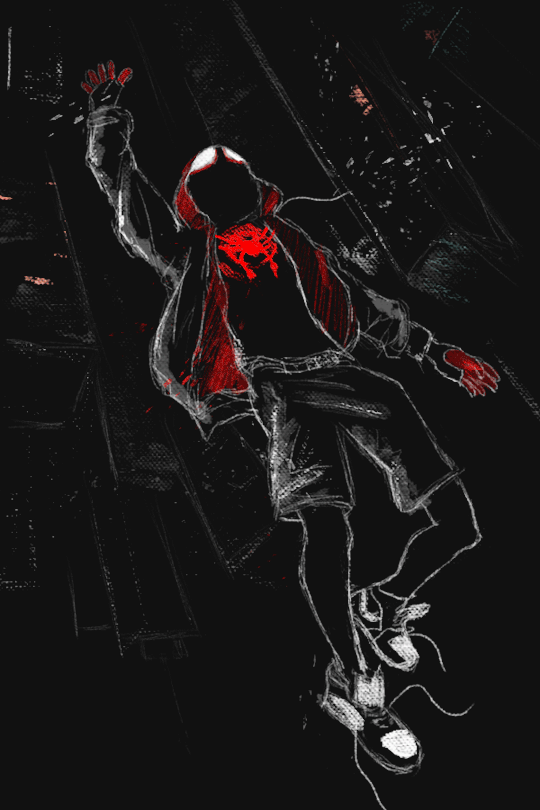
I Did It! A Spider-Verse Fan Art! We Are All SpiderMan <3
23K notes
·
View notes

